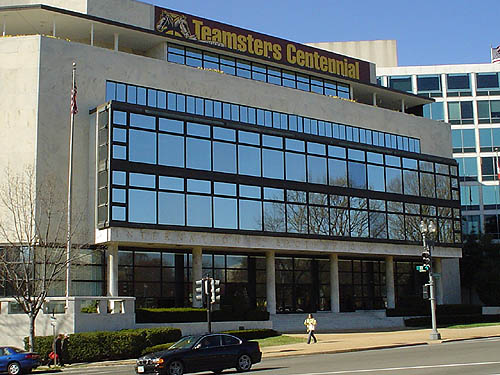The International Brotherhood of Teamsters, with 1.4 million members, is one of the largest labor unions in the world. It is also the most diverse union in the U.S.
Today, it would be hard to identify a Teamster on the streets because we are everywhere. The union represents everyone from A to Z - from airline pilots to zookeepers. One out of every ten union members is a Teamster.
LOCAL UNIONS
There are hundreds of Teamsters local unions across North America. The local unions and their members are the heart and backbone of the union.
Unlike other labor unions, the Teamsters Union is structured to promote strong local unions, and strong local leaders. Since the locals negotiate most Teamsters contracts and provide most of the services to the members, they keep most of the dues money. Locals retain their own expert labor lawyers, certified public accountants, full-time business agents, organizers, and clerical staff.
The members of each local elect their own officers, devise their own structure, and vote on their own bylaws, compatible with the International Constitution and Bylaws. While enjoying their independence, the locals benefit from the expertise and assistance of the International Union, and of the various conferences and councils in the union’s structure.
JOINT COUNCILS
Teamsters Joint Councils are set up in areas with three or more local unions. Joint Councils help coordinate Teamsters activities in those areas. They also help solve problems and decide some jurisdictional and judicial matters.
TRADE DIVISIONS AND CONFERENCES
Trade divisions and conferences aid Teamsters leaders throughout the country who share common interests and problems. They provide an informational clearinghouse for locals that negotiate in the same industry or bargain with the same employer.
Local representatives discuss common problems and concerns at regular trade division and conference meetings.
INTERNATIONAL BROTHERHOOD OF TEAMSTERS
At the union’s headquarters in Washington, D.C., the International Brotherhood of Teamsters supports local unions with:
- Coordination of national contract negotiations, political action, and organizing;
- Training and educational programs for Teamsters officers, business agents, stewards and members;
- Advice and assistance from experienced organizers, negotiators, researchers, attorneys, safety and health professionals, auditors, and communications specialists.
View the International Brotherhood of Teamsters' organizational chart. Read about the department structure at the union's headquarters. The union’s General President and General Secretary-Treasurer serve as the executive officers of the union. The General Executive Board consists of 22 Vice Presidents geographically located or at-large. Three trustees, who are elected at Convention, serve as watchdogs over the International’s finances.
Convention delegates, whom are elected locally, meet once every five years to amend the Constitution and adopt measures lending direction to the union. Between Conventions, the General Executive Board, guided by the Teamster Constitution, is the final governing body.
Elections of officers for International union office are typically held once every five years.





